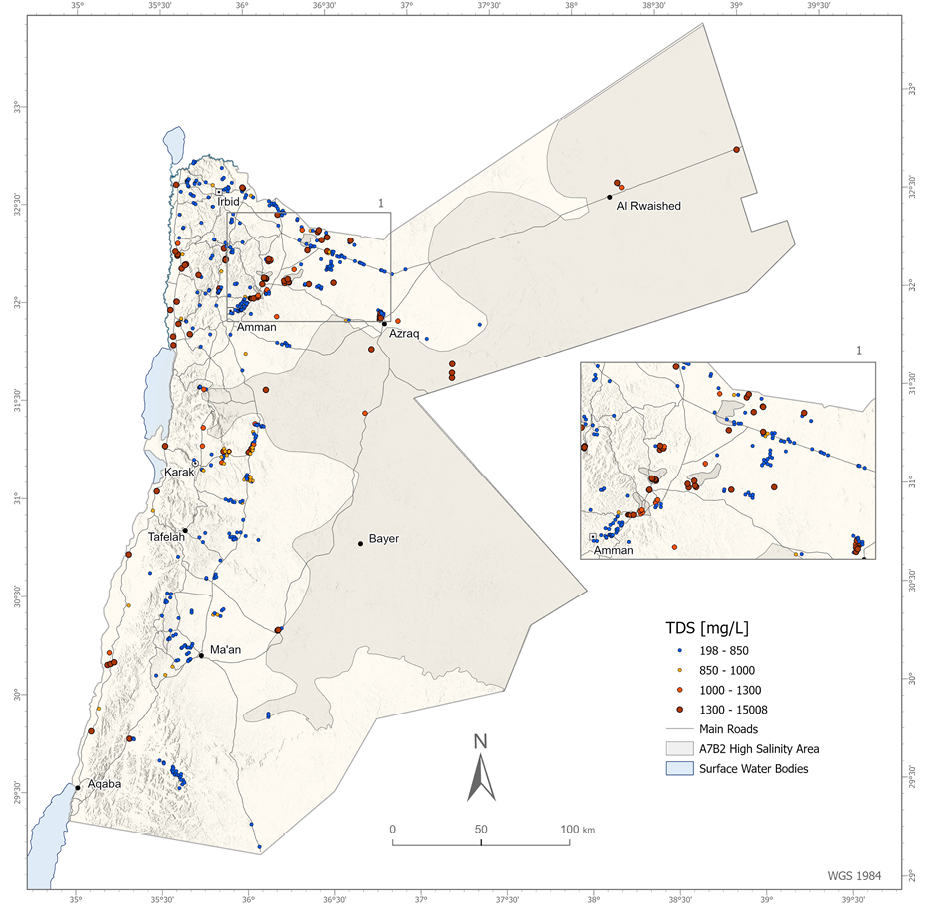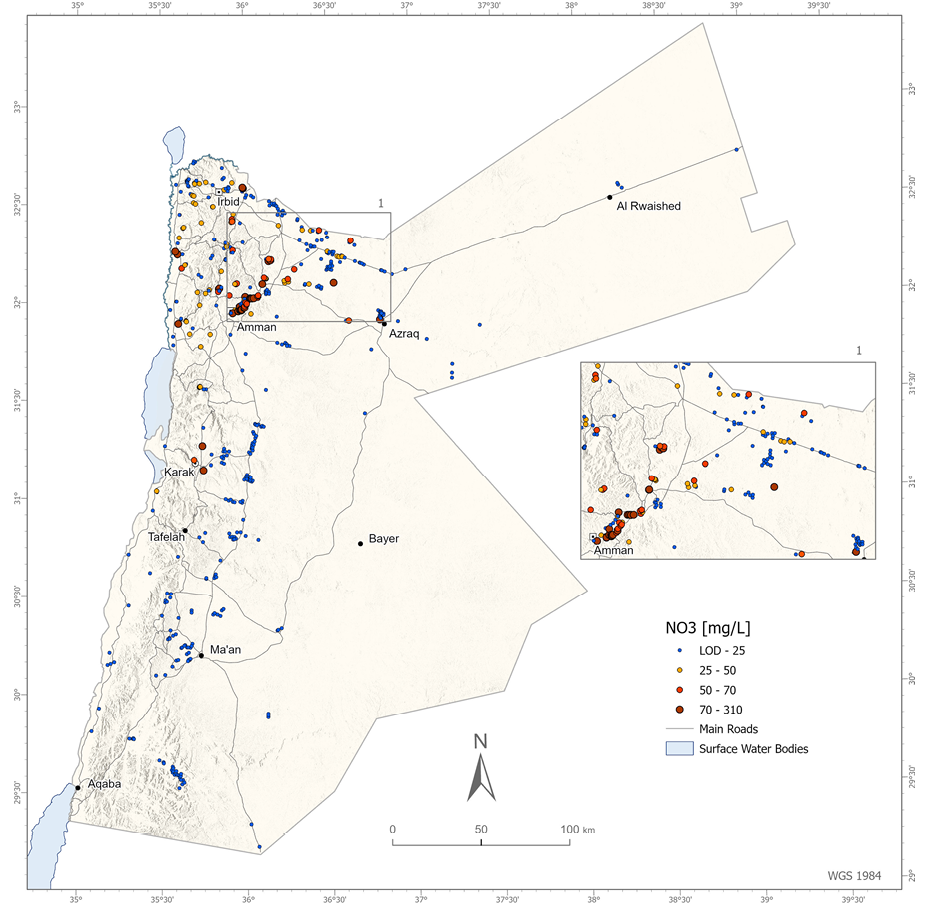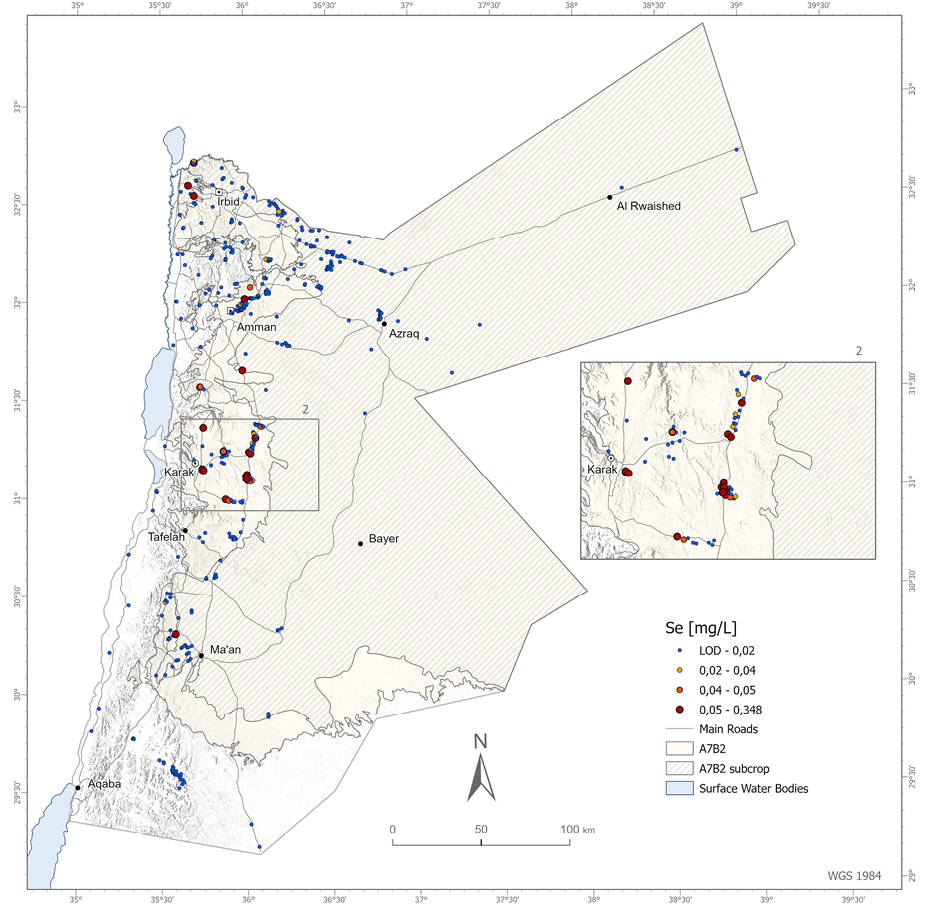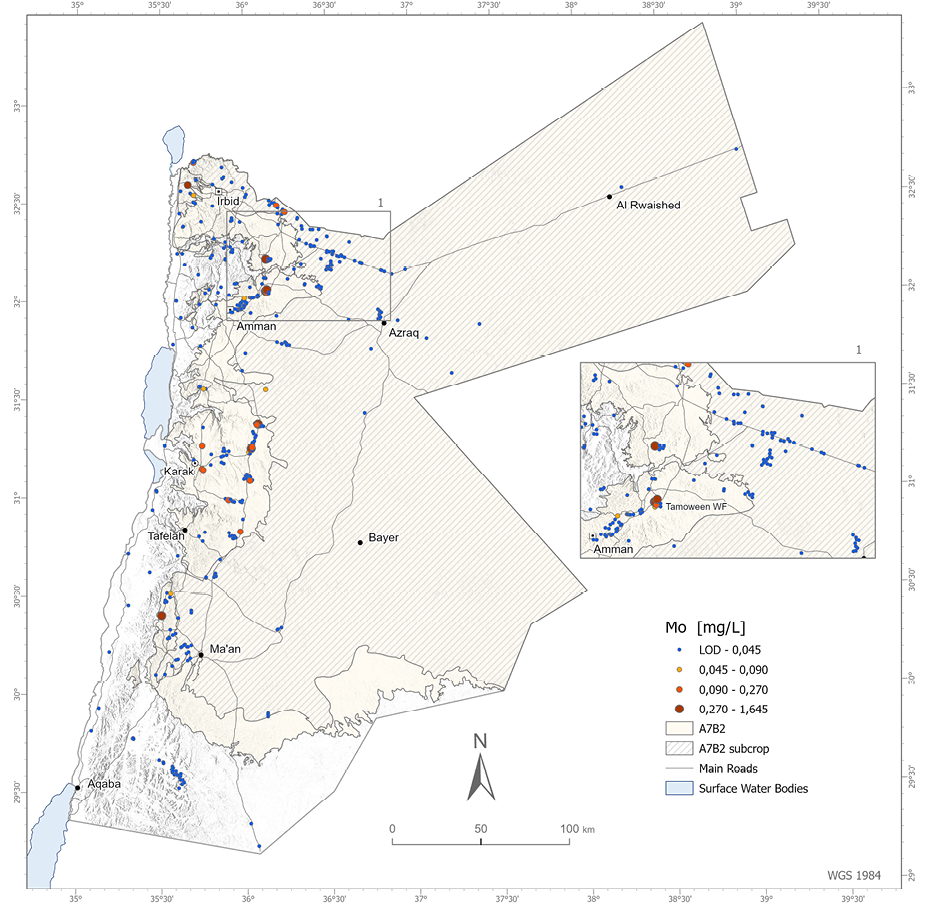The National Groundwater Quality Baseline study is based on data from a one-off sampling campaign, which was conducted between 2021 and 2023, comprising in total 520 sampling locations. It provides a detailed snapshot of the current quality of the groundwater in Jordan and serves as a baseline for comparison to past or future groundwater quality data. In addition, the baseline allows to assess the broader representability of the chosen AGS locations.
The final report will be published in July 2024, but the following maps give an idea about the concentrations, determined in the baseline study at the different locations. Their size and color is chosen with regard to the threshold concentration, as given in the Jordanian Drinking Water Standard (JSMO JS 286:20185).
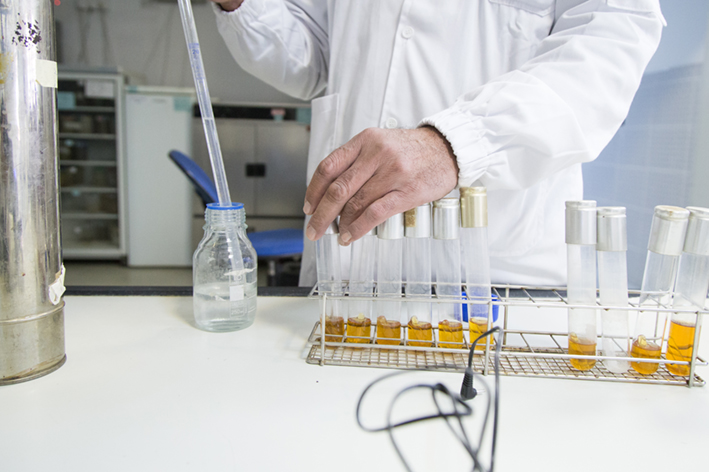
Discover the groundwater quality through maps
Total Dissolved Solids (TDS)
For TDS, all concentrations above 850 mg/L are considered elevated and are hence indicated in this map. All sampling points with lower concentrations are considered unproblematic and are marked in blue. Concentrations 1000 mg/L and 1300 mg/L exceed the JDWS-limit, but can be used for domestic purposes after approval by the Ministry of Health, if no other drinking water source is available. Hence they were considered critical. All concentrations exceeding 1300 mg/L are considered alarming and require treatment or blending, before they can be used for domestic purposes.
Furthermore, the areas, which Hobler et al. (1994) determined as highly saline, are delineated
for comparison.
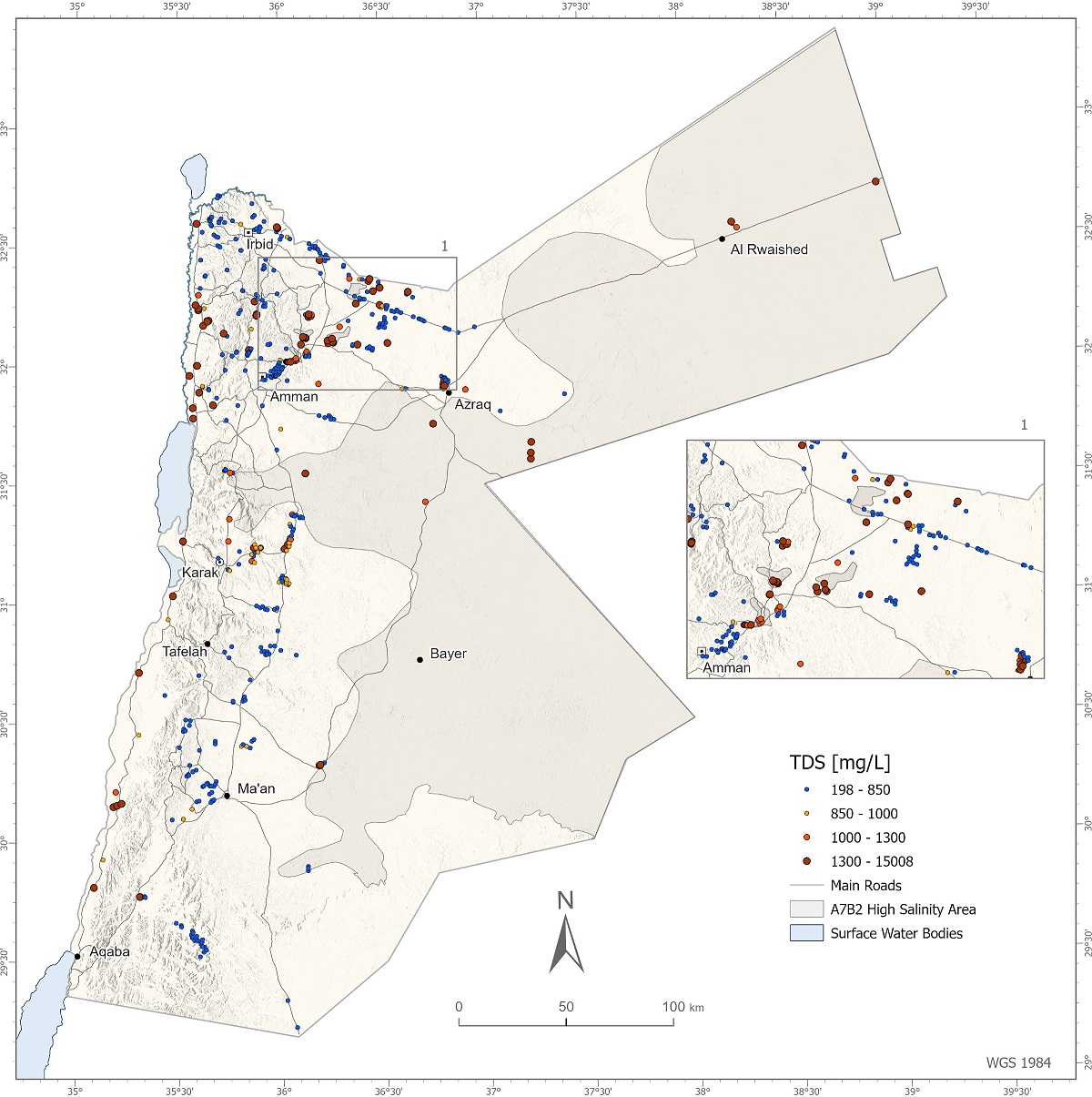
Open the TDS map in a new tab
Back to the top
Nitrate (NO3)
For nitrate, all concentrations above 1/2 of the JDWS-limit of 50
mg/L are considered elevated and are hence indicated in this map. All
sampling points with lower concentrations are considered unproblematic
and are marked in blue. Concentrations between 50 mg/L and 70 mg/L
exceed the JDWS-limit, but can be used for domestic purposes after
approval by the Ministry of Health, if no other drinking water source is
available. All concentrations exceeding 70 mg/L are considered alarming
and require treatment or blending, before they can be used for domestic
purposes.
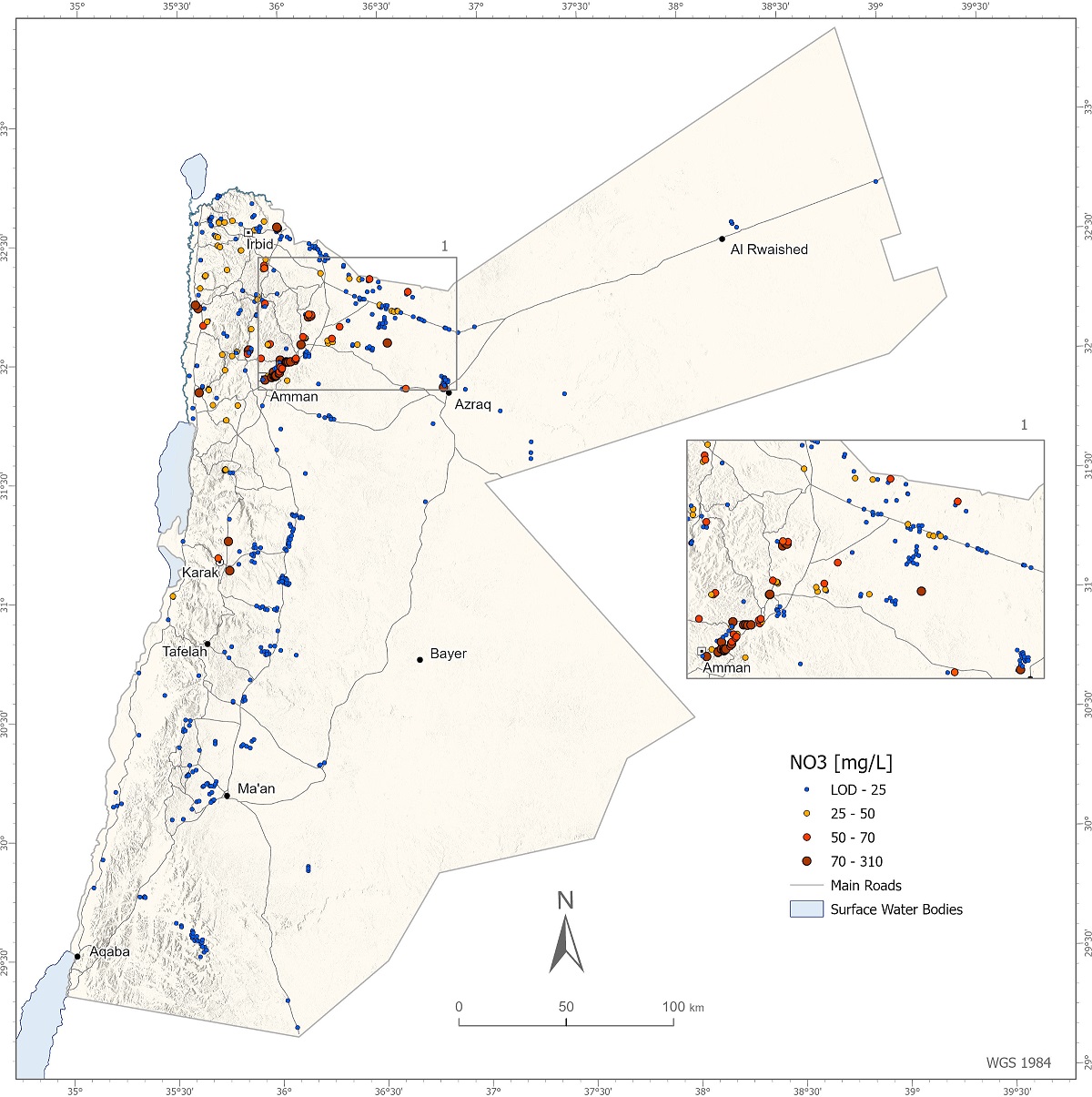
Open the nitrate map in a new tab
Back to the top
Fluoride
For fluoride, all concentrations above 1/2 of the JDWS-limit of 1.5
mg/L are considered elevated and are hence indicated in this map. All
sampling points with lower concentrations are considered unproblematic
and are marked in blue. Concentrations between 1.5 mg/L and 2 mg/L
exceed the JDWS-limit, but can be used for domestic purposes after
approval by the Ministry of Health, if no other drinking water source is
available. All concentrations exceeding 50 μg/L are considered alarming
and require treatment or blending, before they can be used for domestic
purposes.
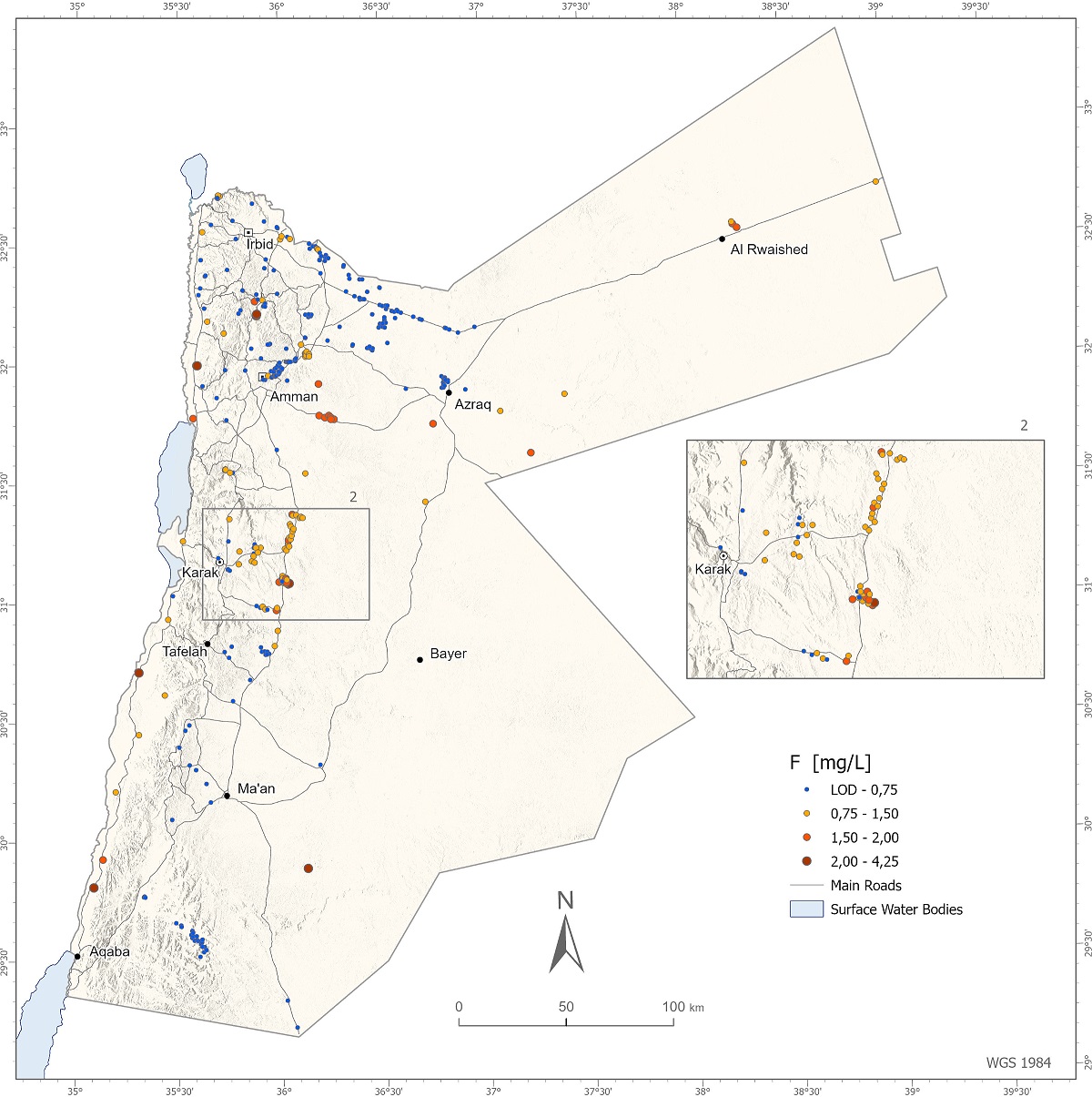
Open the fluoride map in a new tab
Back to the top
Selenium
For selenium, all concentrations above 1/2 of the JDWS-limit of 40 μg/L are considered elevated and are hence indicated in this map. All sampling points with lower concentrations are considered unproblematic and are marked in blue. Concentrations between 40 μg/L and 50 μg/L exceed the JDWS-limit, but can be used for domestic purposes after approval by the Ministry of Health, if no other drinking water source is available. All concentrations exceeding 2 mg/L are considered alarming and require treatment or blending, before they can be used for domestic purposes.
Furthermore, the out- and subcrop of the A7/B2 as the main affected aquifer are
delineated.
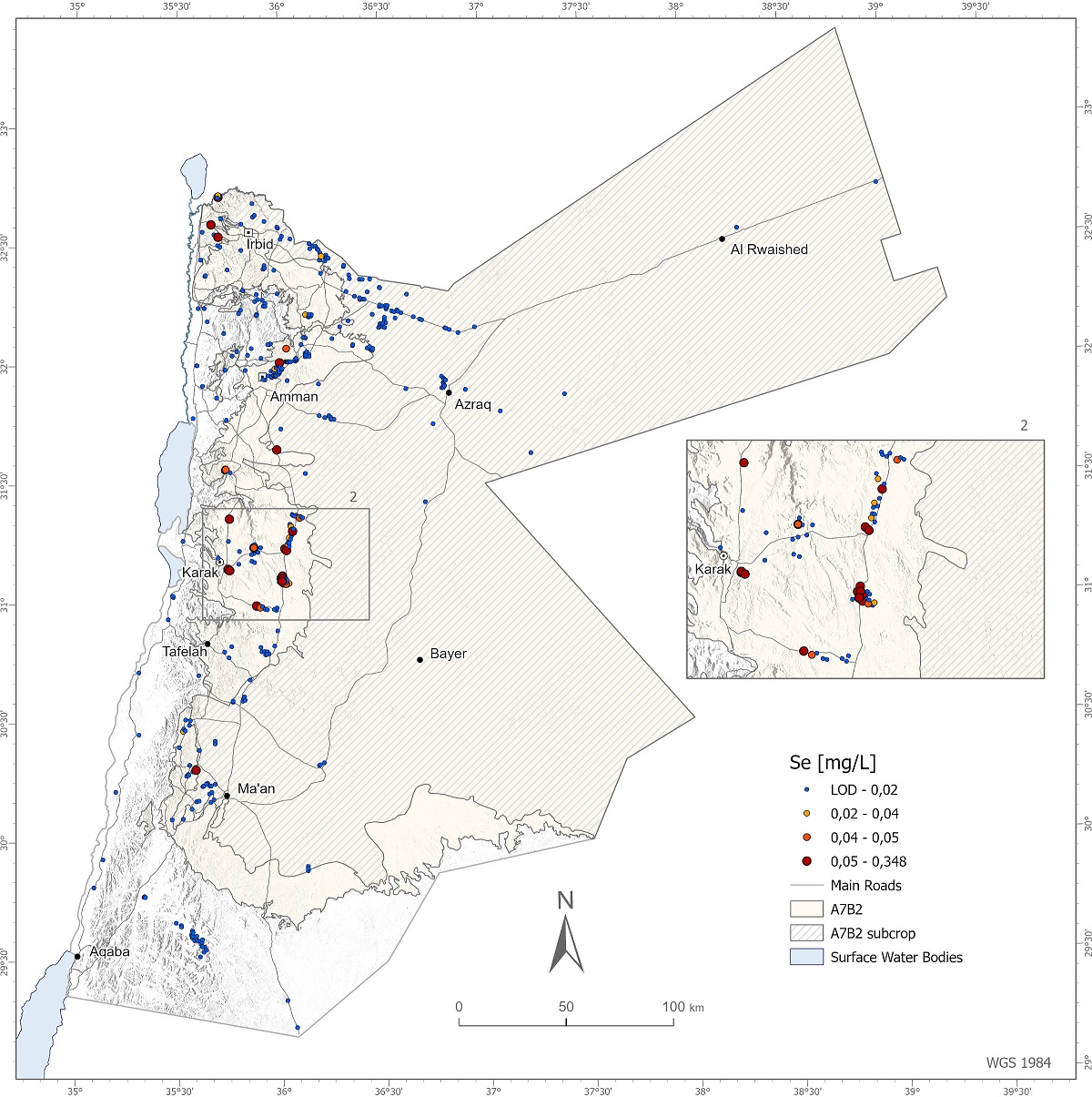
Open the Selenium map in a new tab
Back to the top
Molybdenum
For molybdenum, all concentrations above 1/2 of the JDWS-limit of 90 μg/L are considered elevated and are hence indicated in this map. All sampling points with lower concentrations are considered unproblematic and are marked in blue. Concentrations between 90 μg/L and 270 μg/L exceed the JDWS-limit, but can be used for domestic purposes after approval by the Ministry of Health, if no other drinking water source is available. All concentrations exceeding 270 μg/L are considered alarming and require treatment or blending, before they can be used for domestic purposes.
Furthermore, the out- and subcrop of the A7/B2 as the main affected aquifer are
delineated.
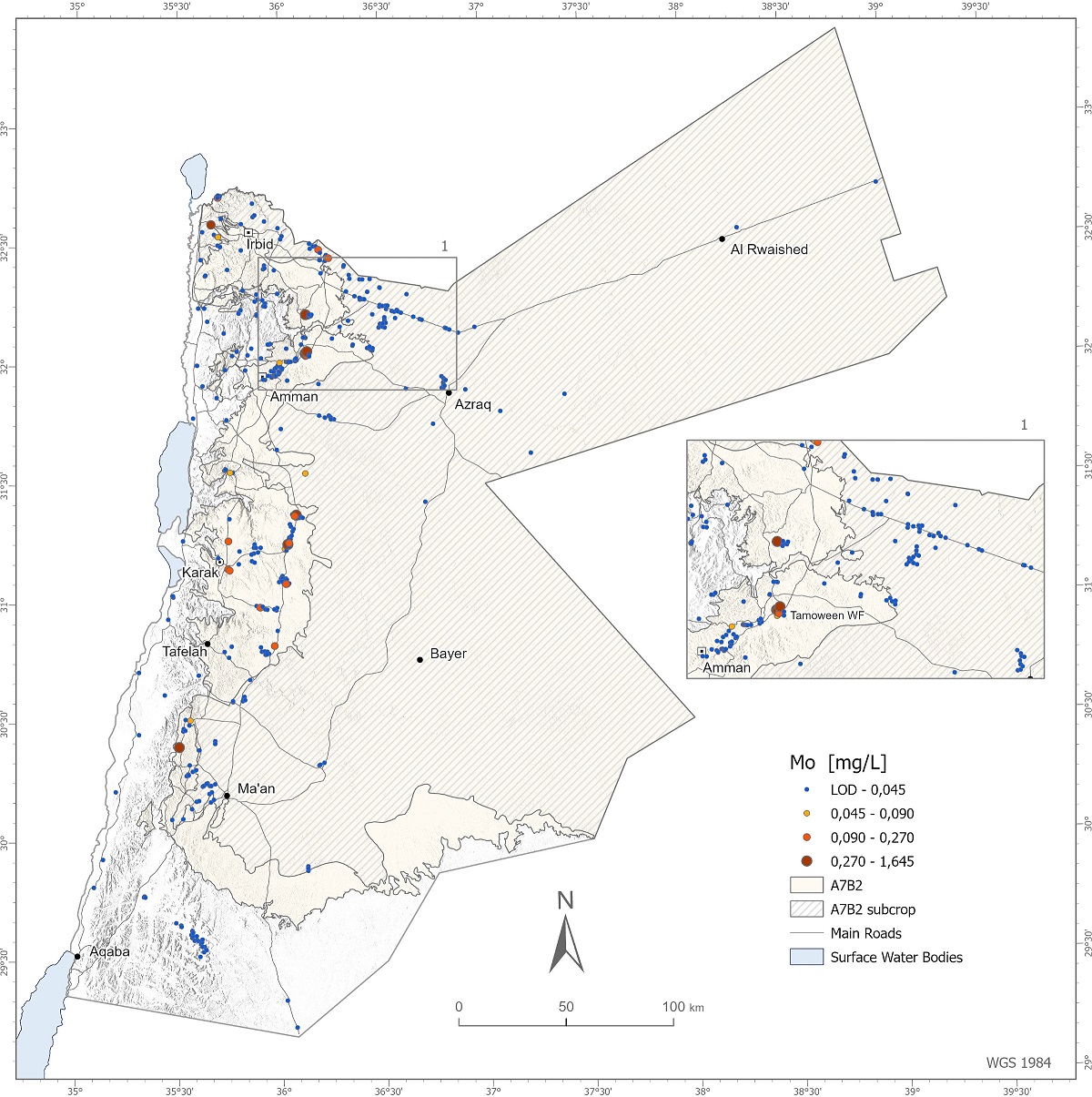
Open the Molybdenum map in a new tab
Back to the top
